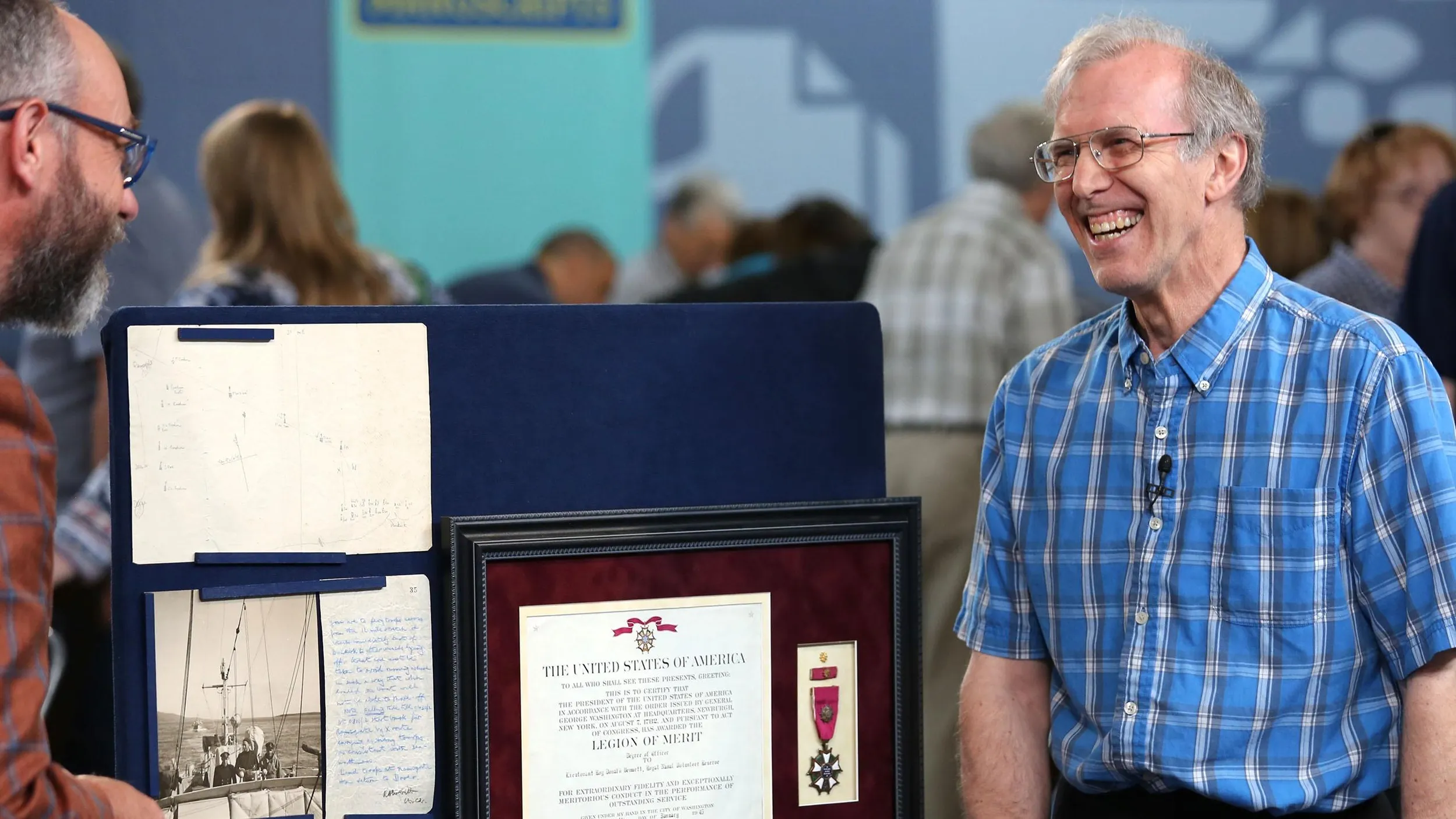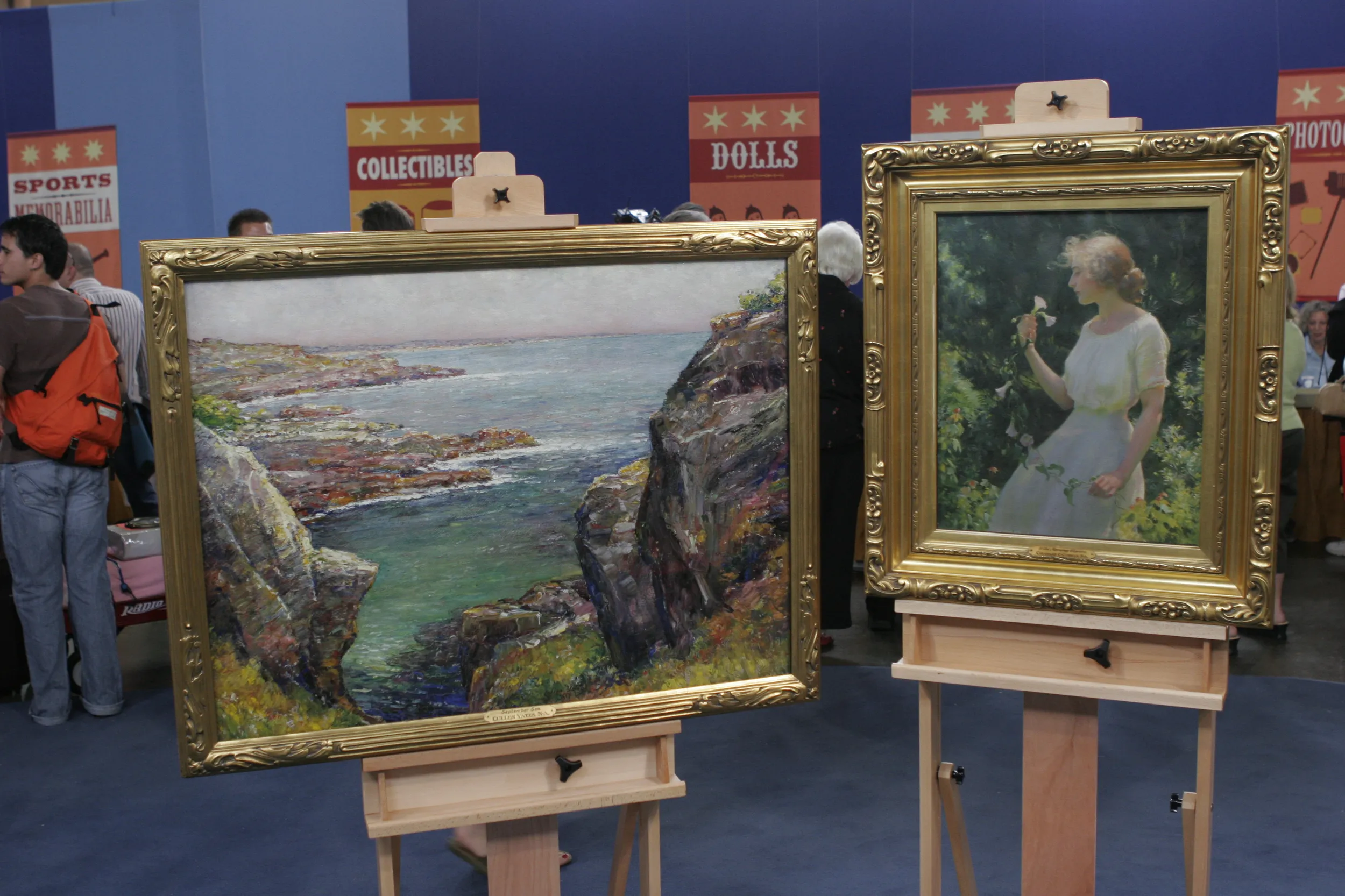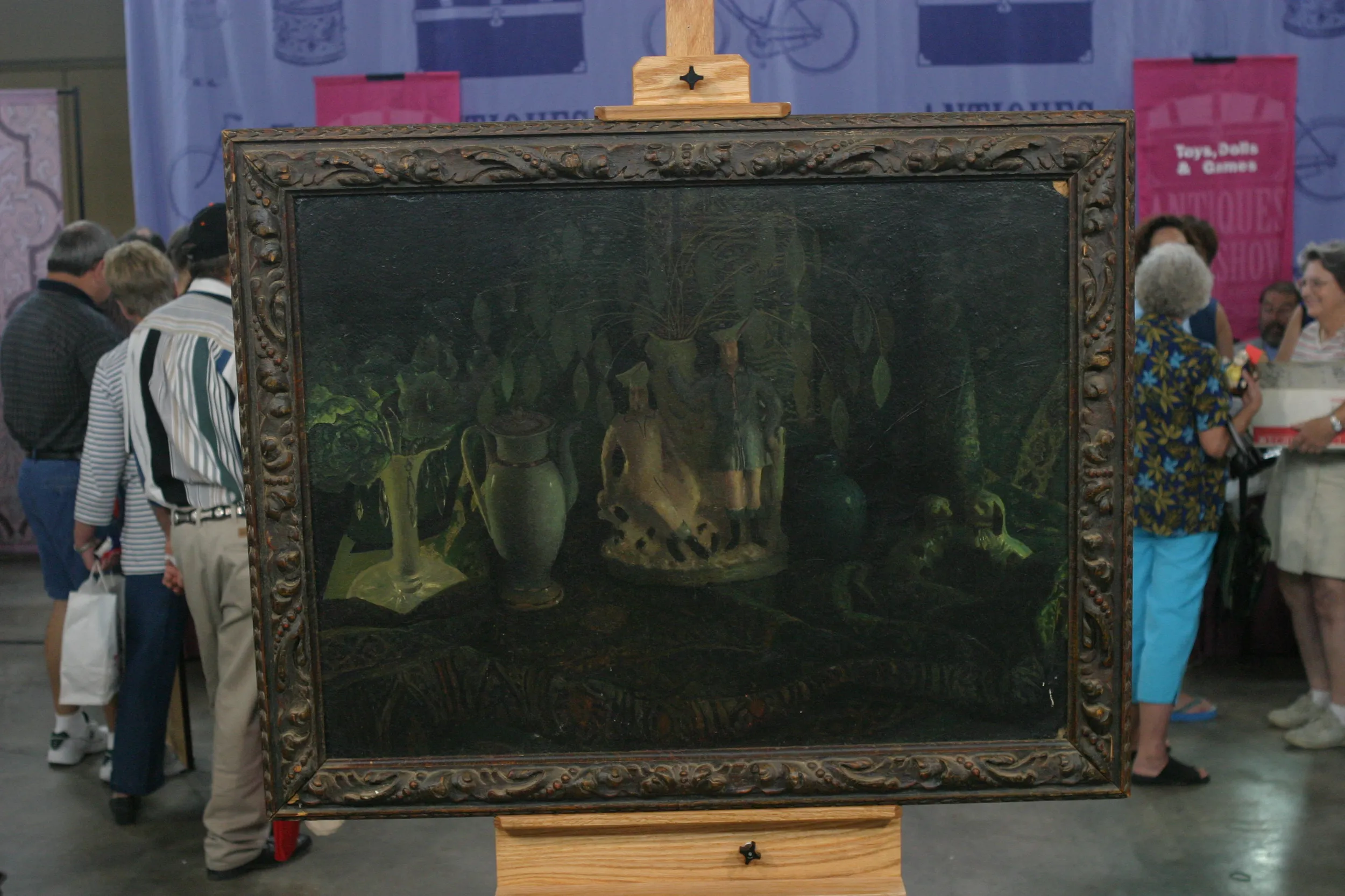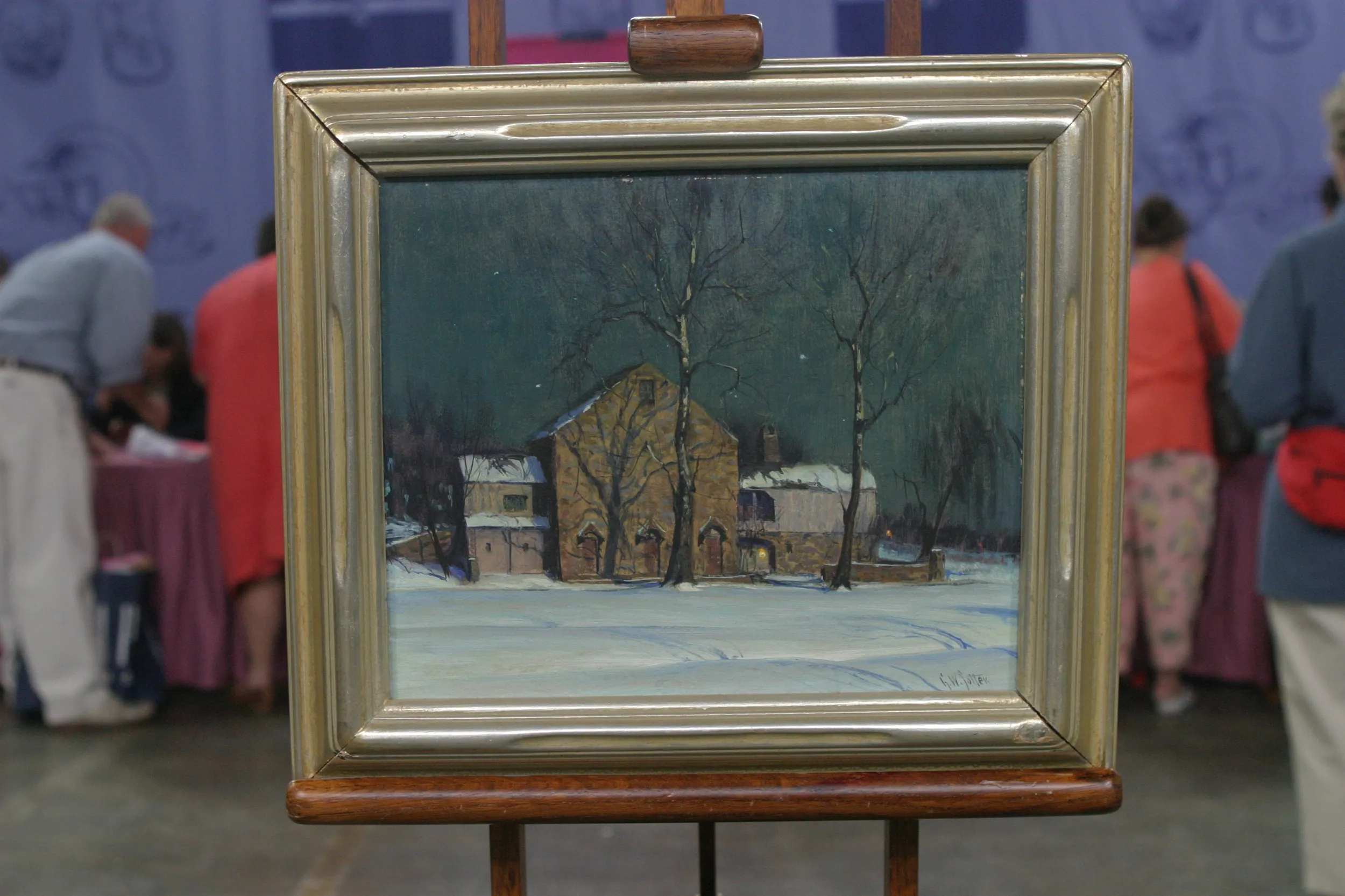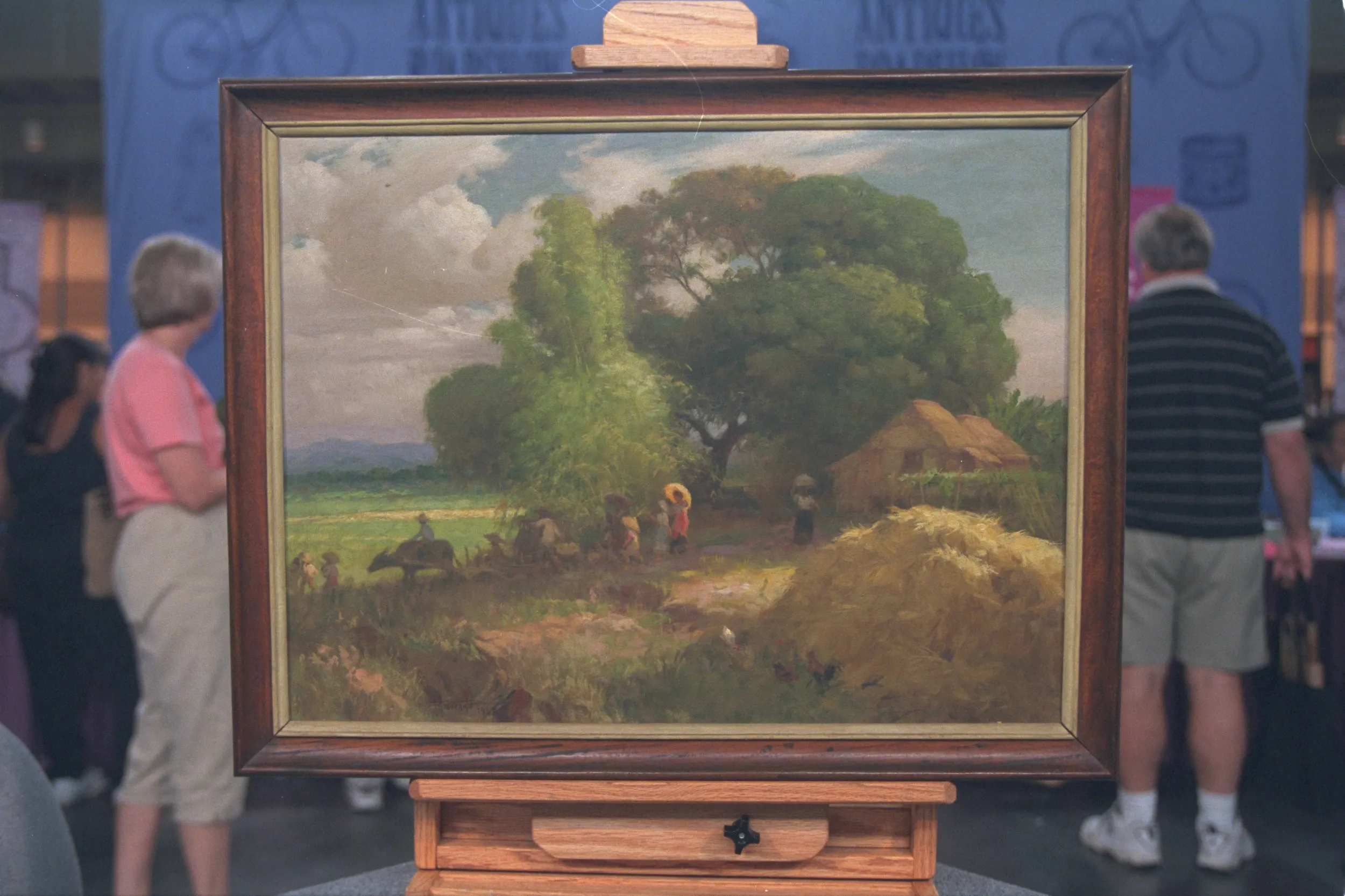GUEST: The artist, George Cope, was a fishing buddy of my great-grandfather's. And the family story is that he gave my grandfather three paintings. We're not sure whether it was for a payment of a bill, because my great-grandfather owned a local grocery store.
APPRAISER: This is a wonderful oil on canvas by George Cope. He was born in West Chester, Pennsylvania, went out west, but then came back home again and had a wonderful career doing some landscape paintings and still-life paintings.
GUEST: Yes.
APPRAISERS: And for a long time he was the darling of collectors in Philadelphia.
GUEST: Really?
APPRAISER: But then his work sort of fell out of favor beginning around the turn of the century when things were becoming more modern. So he actually... he ended up having to teach as a painter, he was a paintings restorer, and he even patented a device for stretching canvases to sort of help make ends meet. So by the end, he was pretty hard up for money. So it's very possible that he would have traded a work of art, or two or three, for a grocery bill. Now what does your family think about this one?
GUEST: Whenever my husband and I watch the ROADSHOW, and there's a painting that comes up that's worth a lot of money, he'll turn to me and say, "And we have a fish."
APPRAISER: (laughing) Well, I love your fish. Today, these are not as popular as they once were. They're facing the same problem that George's art faced at the beginning of the 20th century.
GUEST: Really?
APPRAISER: Everybody is looking for more modern, more contemporary. But in the current market, at auction, you could realistically expect this to fetch between $4,000 and $6,000.
GUEST: Okay. Grandfather made a good catch, huh?
APPRAISER: He made a very good catch, absolutely.

